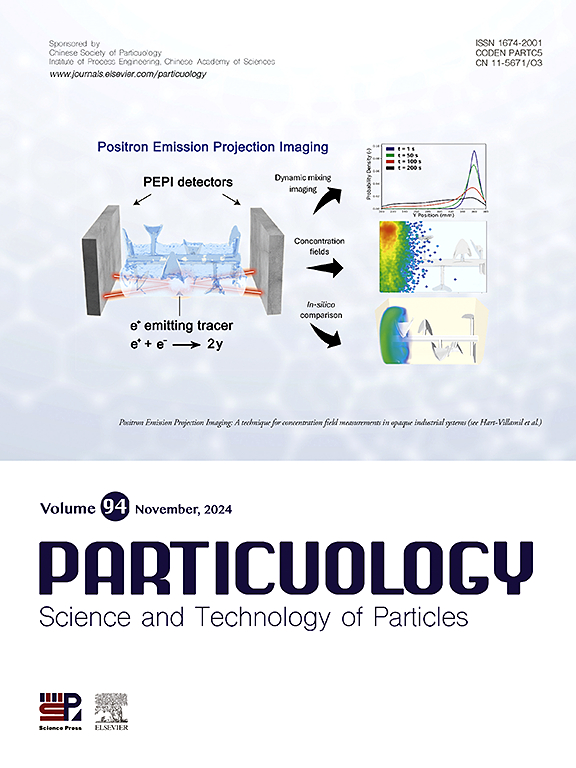An in-depth numerical simulation analysis of the hydrodynamic characteristics of internally-reinforced spouted beds
IF 4.1
2区 材料科学
Q2 ENGINEERING, CHEMICAL
引用次数: 0
Abstract
Due to the lack of gas-solid radial mixing in conventional spouted bed (CSB), particles are prone to accumulation and the formation of flow dead zones. To address the limitations of CSBs, this study, for the first time, the combination optimization of the two strengthening internal components of multi-jets and draft tube was carried out, and two new types of internal strengthening structural spouted beds were proposed: the Integral Multi-jets Draft-tube Spout-fluidized Bed (IMDSFB), and the Integral Multi-jets Open-hole Draft-tube Spout-fluidized Bed (IMODSFB). At the same time, the hydrodynamic characteristics of IMDSFB and IMODSFB are studied by numerical simulation for the first time and compared with the draft tube spouted bed (DTSB) and CSB. Results indicate that compared to CSB, the spouting heights of the DTSB, IMDSFB, and IMODSFB were enhanced by 2.92°%, 14.75°%, and 7.94°%, respectively, and the dead zone of the DTSB, IMDSFB, and IMODSFB decreased by 14°%, 1°%, and 5°%, respectively. Compared to the CSB and DTSB, the addition of novel internal components notably improved the radial velocities of both gas and particles, as well as the gas-solid slip velocity, while reducing flow dead zones within the bed. Furthermore, the gas turbulence kinetic energy in the novel spout-fluidized beds was higher, with increased fluctuations of gas velocity in the spouting region. The granular temperature in the IMDSFB and IMODSFB was higher than in the CSB and DTSB, indicating enhanced particle fluctuations within the bed. These improvements contribute to more efficient gas-solid phase interactions, thereby enhancing the overall performance of the spouted bed.

求助全文
约1分钟内获得全文
求助全文
来源期刊

Particuology
工程技术-材料科学:综合
CiteScore
6.70
自引率
2.90%
发文量
1730
审稿时长
32 days
期刊介绍:
The word ‘particuology’ was coined to parallel the discipline for the science and technology of particles.
Particuology is an interdisciplinary journal that publishes frontier research articles and critical reviews on the discovery, formulation and engineering of particulate materials, processes and systems. It especially welcomes contributions utilising advanced theoretical, modelling and measurement methods to enable the discovery and creation of new particulate materials, and the manufacturing of functional particulate-based products, such as sensors.
Papers are handled by Thematic Editors who oversee contributions from specific subject fields. These fields are classified into: Particle Synthesis and Modification; Particle Characterization and Measurement; Granular Systems and Bulk Solids Technology; Fluidization and Particle-Fluid Systems; Aerosols; and Applications of Particle Technology.
Key topics concerning the creation and processing of particulates include:
-Modelling and simulation of particle formation, collective behaviour of particles and systems for particle production over a broad spectrum of length scales
-Mining of experimental data for particle synthesis and surface properties to facilitate the creation of new materials and processes
-Particle design and preparation including controlled response and sensing functionalities in formation, delivery systems and biological systems, etc.
-Experimental and computational methods for visualization and analysis of particulate system.
These topics are broadly relevant to the production of materials, pharmaceuticals and food, and to the conversion of energy resources to fuels and protection of the environment.
 求助内容:
求助内容: 应助结果提醒方式:
应助结果提醒方式:


